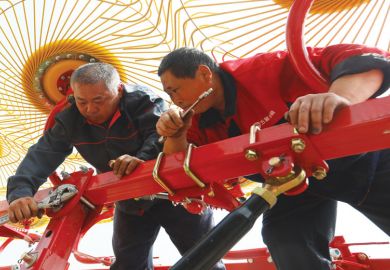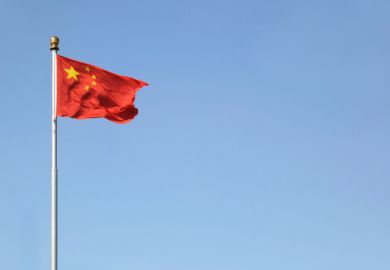The question of how far people travelled and how early they were doing it is a topic of heated discussion among academics, especially archaeologists. The extent, timing and regularity of contact between the Americas and the Old World are often the focus of this debate. Everyone agrees that the issue of long-distance contact is important and that the subject needs more research. But because publishing on transoceanic contact can damage an academic reputation, there are few professionals working in the area. That is why the publication of this new journal dedicated to examining long-distance voyaging is important.
The goal of the editor, Stephen Jett (of the University of California, Davis), is to create a "scholarly serial of global scope, one dealing with all issues relating to long-distance contacts, not just those dealing with New England or Mexico". He intends the journal to be interdisciplinary and open to all, even amateur enthusiasts. Professional archaeologists will likely not wish to subscribe, but perhaps they should.
It is obvious from the first issue that the journal's real goal is the promotion of the idea that transoceanic contact was common in prehistory. Jett believes that the voluminous evidence for such contacts "appears to be on the verge" of forcing recognition that these contacts had big cultural influences and considerable time depth. Two questions immediately arise: what are the data supporting contact, and did this contact have a significant impact on the cultures involved?
The first question is difficult to answer simply because data are often based on the analysis of art styles or on linguistic reconstructions. The one article in the first issue that focuses on the archaeology of these contacts is Jett's "Early watercraft and navigation in the Pacific", which is very general, sometimes making statements of "fact" without scholarly references. Jett traces the development of watercraft and navigation from the initial settlement of Australia 60,000 years ago to the final settlement of Polynesia about AD800, but most of this material is well covered in archaeological literature.
There are two major articles in the first issue based on art-historical comparisons: Carl L. Johannessen's "American crop plants in Asia before AD1500", and Paul Shao's "China and Pacific basin art and architectural styles". Johannessen would have us accept regular two-way contact between Mexico and India and China before AD1500 - with the exchange of maize and sunflowers with India, and maize, sunflowers, peanuts, pumpkins, yam beans, chilli peppers and sweet potatoes with China. Exchange with China is alleged to have begun before 2335BC and with India before the 11th century AD, and initial contact is postulated between Japan and Ecuador as early as 5000BC. Johannessen cites the debatable 1966 work of Betty Meggers and Clifford Evans as evidence of the connection. Meggers's theory that the Olmec culture of Mesoamerica is derived from Shang Chinese culture is also mustered in support. But excavations on the Gulf coast of Mexico have revealed the indigenous origins of Olmec culture. And although Johannessen's tantalising argument relies on the analysis of representations of plants in art, the fact is that no physical remains of any of these plants have been found in Asia.
Shao follows in the footsteps of Meggers. Examining the many similarities between Shang dynasty and Olmec/ Maya art motifs, Shao concludes: "It is highly improbable that such a multitude of complex motif gestalts could have been independently and suddenly invented in Mesoamerica after 1200BC (the date of the Shang culture)." One major flaw here is that Shao at times compares items separated in time by 2,000 years. Another is that no artefacts of Shang origin have been found in the New World.
The historian Eugene Fingerhut comments on Johannessen and Shao. Fingerhut's even-handed review adds an element of much-needed credibility to the first issue of Pre-Columbiana . This is not to say that he is entirely negative: he sees some of the data as convincing but not conclusive. I would agree.
The linguistic data for contact presented by Mary LeCron Foster, David Kelley and Mary Ritchie Key make a real contribution. Foster's article provides much useful information about similarities between Austronesian and South American languages, while Kelley suggests a connection between the Pacific and South American words for yam and sweet potato. Key introduces a new method of word analysis, which she applies to "languages across South America, and around the Pacific Rim" with interesting results.
The articles in the second issue are less professional, although some of the data presented are specific and convincing - for example, the presence of Japanese Early Jomon pottery on Efate (Vanuatu), nearly 7,000km from its point of manufacture. In 1999, William Dickerson et al published the results of petrographic studies of sand tempers and thermoluminescence dating of this pottery. These show that the potsherds are genuine Early Jomon ceramics manufactured near the northwestern tip of Honshu. The implication is that the inhabitants of Japan in 3000BC were able to sail for thousands of kilometres. Was this a voyage of discovery or simply the journey of a shipwrecked fisherman? It is an amazing feat, but did this contact have a significant impact on the cultures involved?
Here is a very good example of the type of data that exists for long-distance voyaging. Jett suggests: "The Jomon people may indeed prove to have been the pioneers in the remote Pacific, earlier even than the Austronesians." In other words, the Jomon people settled all of the Pacific islands.
Not being an expert on Pacific archaeology myself, I asked someone who is to evaluate Jett's article. Barry Rolett of the University of Hawaii is a visiting scholar at Harvard University's department of anthropology and author of Hanamiai (1998), a detailed study of the archaeology of the Marquesas Islands in East Polynesia. He believes "there is absolutely no evidence of any pre-Austronesian population in remote Oceania". I would add that the Jomon ceramics of Efate (Vanuatu) are the only evidence for pre-Austronesian presence in all of Oceania and they are surface-collected potsherds. I do not imply that the find is not genuine and important, only that without an archaeological context its significance cannot be assessed. Further, Jett's extension of this data to imagine a Jomon colonisation of remote Oceania is typical of the misinterpretation of data present in the second issue of the journal.
The other offerings are mostly comical. In the second issue, Gloria Farley finds the worldwide distribution of the "bird-and-fish" motif (really a bird eating a fish) convincing evidence for cultural diffusion. She comments that the motif may be a representation "of communication between the two speciesI or do they illustrate consumption of the fish by the bird, even though the fish is sometimes larger than the bird?" This is solid evidence that some academics need to get out into the real world more often: I suggest a walk along the beach of the Fraser River in British Columbia after the autumn salmon run. A new journal on a controversial subject cannot afford to publish such material because it gives an easy opening for detractors to marginalise the entire effort. Other articles in the second issue consist of unsupported and illogical speculations.
The latest (third) issue is a "Norse Vinland Millennial" issue. It deals entirely with the Norse exploration of Iceland, Greenland and the New World. Subjects discussed include: the authenticity of the Yale Vinland map; the Viking sagas; Viking navigation methods; a review of the Smithsonian's Viking exhibit; and a comprehensive, 28-page annotated bibliography of publications relating to the Vinland map. These articles are focused and professional. With the exception of his defence of the controversial Kensington stone, Jett seems to have got the journal back on track with this issue.
The journal's price and its inconsistent and irregular nature will give some potential readers second thoughts about subscribing. Nevertheless, I recommend it for several reasons. First, each issue contains lengthy annotated bibliographies of material related to the subject of long-distance contacts - a major contribution. Second, every issue has at least one article that will stimulate serious discussion about long-distance voyaging. Finally, if the questions raised by this topic are ever to be properly answered, they will need the contribution and critique of the academic community. So, is Pre-Columbiana a fringe journal or a professional forum? It is both, and will likely remain so.
Bryan Wells is a PhD candidate in archaeology, Harvard University, Massachusetts, United States, and project epigrapher for the Harvard expedition to Baluchistan.
Pre-Columbiana: A Journal of Long-Distance Contacts
Editor - Stephen C. Jett
ISBN - 1522 8495
Publisher - Early Sites Research Society
Price - $25



